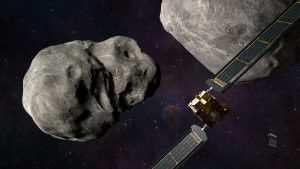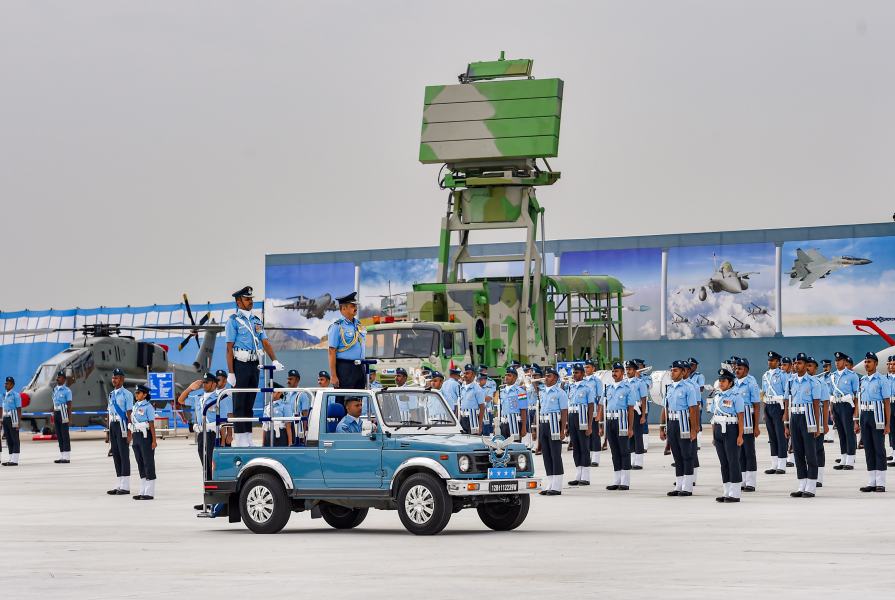
A NASA photo
WASHINGTON (PTI): An asteroid which was deliberately smashed by NASA's Dart spacecraft has left a trail of debris stretching thousands of kilometres, a new image captured by a telescope in Chile shows.
The Double Asteroid Redirection Test (DART) spacecraft intentionally crashed into Dimorphos, the asteroid moonlet in the double-asteroid system of Didymos, on September 26.
This was the first planetary defence test in which an impact of a spacecraft attempted to modify the orbit of an asteroid.
Two days after DART's impact, astronomers used the 4.1-meter Southern Astrophysical Research (SOAR) Telescope in Chile to capture the vast plume of dust and debris blasted from the asteroid's surface.
The new image shows the dust trail the ejecta that has been pushed away by the Sun's radiation pressure, like the tail of a comet -- stretching from the centre to the right-hand edge of the field of view.
At Didymos's distance from Earth at the time of the observation that would equate to at least 10,000 kilometers from the point of impact, the researchers said.
"It is amazing how clearly we were able to capture the structure and extent of the aftermath in the days following the impact," said Teddy Kareta from Lowell Observatory.
"Now begins the next phase of work for the DART team as they analyse their data and observations by our team and other observers around the world who shared in studying this exciting event," Matthew Knight from the US Naval Academy added.
The team plans to use SOAR to monitor the ejecta in the coming weeks and months.
These observations will allow scientists to gain knowledge about the nature of the surface of Dimorphos, how much material was ejected by the collision, how fast it was ejected, and the distribution of particle sizes in the expanding dust cloud.
For example, whether the impact caused the moonlet to throw off big chunks of material or mostly fine dust, the researchers said.
Analysing this information will help scientists protect Earth and its inhabitants by better understanding the amount and nature of the ejecta resulting from an impact, and how that might modify an asteroid's orbit.
 Previous Article
Previous Article Next Article
Next Article













The Indian Air Force, in its flight trials evaluation report submitted before the Defence Ministry l..
view articleAn insight into the Medium Multi-Role Combat Aircraft competition...
view articleSky enthusiasts can now spot the International Space Station (ISS) commanded by Indian-American astr..
view article